Sugar Tax: Answer to Obesity?
This week, is sugar the enemy? Difficult as it is to digest, one person in every four in the UK is obese, and treating the condition as well as its knock-on effects, costs the health service Ã?,£5.1 billion per year. Some say sugar is to blame, but is it the only guilty party? Plus, in the news, pigeons detecting cancer, half of museum specimens might be mislabelled, and how science journals are being hacked...
In this episode

00:54 - Birth of planet observed for first time
Birth of planet observed for first time
with David Rothery, Open University
So far, scientists have logged more than 1,900 planets orbiting other stars outside our solar system. But no one has yet spotted any that are still in the process of formation. Until now that is, because researchers in the US have finally spotted just such a planet. It's in orbit around a young 2-million-year-old star, which is 450 light years away from Earth and catchily called LkCa 15. This star is actually quite similar to our own Sun. Planetary scientist David Rothery, who wasn't involved in the study, explained the significance of the discovery to Connie Orbach...
David - What's exciting is we're seeing a planetary system in the act of a formation. There are three planets orbiting this star; the nearest one's about ten times Earth's distance away from the star, so that's twice Jupiter's distance away from our sun, and the furthest one is about 20-25 astronomical units, so that's a little bit less than Neptune's distance from our Sun. So three giant planets, and the innermost one has still got gas falling into it, which has been measured at this very high temperature of 10,000 degrees; its losing potential energy as it falls into the planet's gravity whirl and it gets really hot. So we're seeing giant planets forming.
Connie - How does a planet form in the first place?
David - What happens is, as a star forms, it forms within a cloud of gas and dust which contracts gravitationally, and it contracts. To conserve angular momentum it must start spinning faster, so the gas and dust gets shaped into a disc rather than a three dimensional cloud, and within this disc you get concentrations of material which collapse onto each other to form planets. Now the temperature is changing all the time this is going on, so you get the materials that can condense at high temperatures forming first; that's the metals and the rock, and later on you get ices forming, and then with a body that's iron and rock surrounded by ice, that's got enough gravity to start sucking the gas out of the cloud as well and probably we're seeing that stage occurring round LkCa 15. You've got the kernel of a giant planet which is now scavenging all the gas that it can, and it's the in-fall of the gas which is shining so brightly and enabling the process to be imaged.
Connie - Why hasn't this been seen before?
David - Well, you need very sophisticated instrumentation to see this. The disc of gas and dust was seen round this star fifteen years ago. The innermost planet, LkCa 15b was imaged five years ago. Now they are using adaptive optics on the the large binocular telescope, and infrared filters to isolate different wavelengths of light that are being emitted as the gas falls inward and acretes onto the planet. So, it's a combination of big telescopes; very high resolution because you've got big lenses, and adaptive optics to sharpen the focus, and the right kind of spectral data to show the glow of the gas.
Connie - Oh wow! So this is a really good example then of why we're wanting to get bigger and bigger telescopes, more and more technology. You know, they may cost a lot but they're showing us so much more.
David - Yes. I've seen quotes suggesting that what we're seeing here is better than Hubble space telescope could ever achieve for example. It's not a mountain in Arizona, it's above a lot of the Earth's atmosphere which helps, it's got adaptive optics to increase the sharpness because the atmosphere is shimmering all the time, even from a cold mountain top in Arizona you need to correct for the atmospheric effects, and they are doing that very successfully now.
Connie - What can we learn from this sort of planetary formation?
David - I think we're seeing an evolution in knowledge here. This isn't going to revolutionise anybody's ideas, but we're able to demonstrate how early in the life of a star planets form, and maybe we can get some handle on the rate at which planets grow, because actually we don't really know that. Some people suggest you can go from gas and dust to full size planets in a million years, some people say tens or hundreds of million years, and it would be good to gate a rate of processes. That's what I'm looking forward to seeing from this but, of course, it's only one example, and it may not be typical of all planetary systems, but at least it's a start.

05:34 - Science journals getting hacked
Science journals getting hacked
with John Bohannon, Science correspondent
A number of high-profile groups and corporations have been "hacked" recently, and the world of science isn't immune either. Journalist John Bohannon has found that fraudsters are cyber-stealing the Internet domain names of research journals and then setting up fake websites bearing a close resemblance to the real thing, which they're then using to extract money from well-meaning researchers. He told Chris Smith how they're doing it...
John - When you, a normal person, go on the internet and try to read an article, what happens is when you type in, for example, Nature.com into your browser. A request gets sent on the internet to a bunch of computers called domain name servers and they do one simple job. They take that name, in this case Nature.com, and they look up a string of numbers called the IP address. once they find it then they send your request to another computer, which is actually controlled by Nature, the journal. Every server on the internet has its own string of numbers, it's like an address, a phone book.
Once your request arrives at the server it says, "Oh, hey! Someone wants to read this article." It parses your request and sends you the correct web page and that's what you see. And all that happens in the blink of an eye, and it usually works just fine. So here's the catch; if you forget to pay the bill for the registration of your domain - it happens about once a year and it's only ten quid - then there's a narrow window of opportunity where a criminal can slip in. As long as they've been tracking you, and they know that this little opportunity exists, they can actually snatch that domain right out from under you by buying it.
Chris - And when you say domain, that is the web address of the journal you think you are going to, to get the paper that you want to read and, in fact, someone has bought that from under the person who really legitimately owns it, and hijacked it?
John - Yes, exactly. And there's no way you could know, because you just type in "Nature.com" into your browser and it's going to show you something, and you have no idea that, what might have happened, is it went to some criminal's computer server and what they've done is made a clone of the Nature website. Usually it's pretty harmless, because people just want to read an article, and it's no big deal; but if it's a scientist, for example, visiting an open access journal and wanting to publish there - they're going to give credit card information, they're going to send real money; they might give away their password to the real web site.
Chris - Is there any evidence that criminals are exploiting the system in this way. They are saying to scientists "right, send us your money because we are going to publish your paper, this is what it costs, so you have to pay."
John - So this tip came in, just this summer, that this might be happening, and Science put me on the case. I looked systematically across 12,000 journals, and I found 24 whose web domains had been snatched and, of those, two of them have cloned journals. So, I know of two cases, right now, where hijackers have opened up for business, and they are actually making money.
Here's what I find truly insane. In one case, there's a journal, completely fake, they snatched the domain and hijacked the journal and they've opened for business and, for 150 US Dollars, you can get your research published in this journal and it actually does appear online. There are like dozens of articles from scientists from all over the world, on all kinds of topics that are now published there. And so you might ask yourself "well, why bother?"
The sad thing is it's beneficial for both parties. So the hijackers are getting easy money, they don't actually have to run a real journal. If you are running a real journal you have to do what's called "peer review," which means you need to chase down experts on this topic; get them to really read and criticise the article; find out if it's really up to snuff. They don't have to do any of that. But it's also beneficial for the scientist, because now they've got a publication to their name in a journal which, in this case, is indexed by Thomson Reuters through their big database called the "Web of Science." It's really prestigious, and so it could very well be that everyone's benefiting. Except Society of course.
Chris - Surely the journals that are being hijacked have got something to say about this. They must know?
John - Yes, and they're very troubled about it but it's so hard legally to address this problem because the hijackers could be anywhere in the world, and the companies that do the domain registration are also all over the world and they don't really have much leverage.
You could launch a fraud case, for example, maybe in the country where the hijackers registered the domain, but they could just slip away long before that gathered steam, and you would be out of a lot of money. Most journals are doing nothing, and the ones I have talked to are just planning on sort of quietly switching to a new domain.
Chris - What would you like to see done about this, John? Or what can we do about it?
John - Well, in general, journals need to clean up their act when it comes to websites, they are doing a pretty sloppy job. And for the public, the general take home is, if you visit a website you might not necessarily be seeing what you think you're seeing. Someone else could be actually controlling that website.

11:19 - Mythconception: Is glass a liquid?
Mythconception: Is glass a liquid?
with Dr Kat Arney, Naked Scientists
This week Kat Arney has been reflecting on the claim that glass is a liquid...
Kat - If you're lucky enough to take a tour round one of the many grand medieval cathedrals of Europe, take a careful look at the windows. You'll notice that some of the panes of ancient glass are thicker at the bottom than they are at the top, looking for all the world like the glass is very slowly melting downwards in the frame. Tour guides and teachers alike will explain that the reason this happens is because glass is actually a liquid rather than a solid, although it's a very slow-moving one.
On the surface this explanation makes a lot of sense. Many materials can exist in different states: think of water, which is solid below zero degrees Celsius, liquid up to a hundred degrees, and then becomes a gas as things heat up further. Glass is mostly made of silica - silicon dioxide as chemists call it, or sand as most of us know it. Heated up with certain other chemicals to an impressive 1,700 degrees, it becomes molten, liquid glass. From this state it can be poured into moulds to set - which is how bottles and glasses are made - or floated on top of vats of molten tin to make perfectly flat glass panes.
And when molten glass is cooled down slightly it can be carefully manipulated, like super-heated Plasticine - you've probably seen footage of traditional glassblowers at work, puffing down long tubes and twisting the hot, toffee-like material into all kinds of beautiful and useful shapes.
Based on this, it seems reasonable to think that the stuff inside our window frames may not be as solid as it seems. Indeed, when scientists have looked closely at the organisation of silica molecules within glass, they look jumbled and disordered - similar to molecules in a liquid like water - rather than the ordered, crystalline structures seen in other solids like metals. This irregular organisation is what's known as an 'amorphous solid', which is seen in other liquids that cool very fast into solids, such as certain types of ice that formed when very hot water is cooled down very fast - you can almost think of it as a 'solid liquid'.
So is the glass in those medieval windows actually on the move? Well, a research paper published in April 2013 by researchers in Texas came pretty close to shattering that myth. By studying a piece of 20 million-year-old amber - which is also a form of glass - and subjecting it to changes in temperature, they found that the molecules inside it didn't reorganise themselves in the kind of way that might be expected if it had any sort of liquid properties.
Then at the beginning of 2015, a team led by scientists at the University of Bristol took a closer look at glass using computer simulations, calculating all the different ways in which the molecules in glass might be interacting with each other, and seeing which outcome best reflects reality. They found that over time, molecules of silica in the glass settle down with their neighbours, forming more organised local structures over thousands and millions of years. It's not the same as saying the disorganised structure is a liquid, only that the organisation of the molecules in glass seems to get more regular over (a very long) time.
This still leaves the question of why the bottoms of those medieval windows are thicker than the tops. But there's no mystery here either. It's easily explained by the way they're made: back in the old days, glassblowers would spin a blob of molten glass into a disc and cut it into panes. This process meant that some edges could end up thicker than the others, and when the fitters put them into the frames, they tended to pop them in heavy side down, for stability and safety's sake.
So there you have it - glass is a solid, although it's a disorganised one. Which is lucky, because the only liquid I want in my glass is wine.
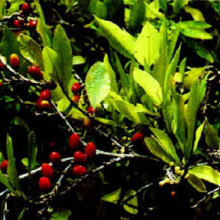
15:27 - Half of specimens mislabelled in museums
Half of specimens mislabelled in museums
with Dr Zoë Goodwin, University of Oxford and Dr Henry Disney, University of Cambridge
What's in a name? A rose by any other name would smell as sweet, but are we actually sure it's a rose? According to new research, around 50% of species may have been sitting under the wrong names in museums and other collections. Georgia Mills has the story...
Georgia - Here is a riddle for you. What do Beyonce, David Attenborough and Darth Vader have in common? Stumped? Well they have all had one of the greatest biological honours - they've had species named after them. Every single specimen on earth known to science, has been given a name, form us, the Homo sapiens to the Bumble Bee (Bombus supremus). But news
broke this week from a study published in Current Biology that up to half the world's specimens might be sitting under the wrong name. The group re-examined all the species from a group of plants, the gingers, and
found that most of them had been given the wrong name at some point throughout history, and many still had. I spoke to lead researcher, Zoe Goodwin to find out why this is...
Zoe - The main reason is, just because there's a huge volume of specimens, and tons of new species coming in, and it's a very complex set of things you're looking at. In order to make sense of it you have to basically become an expert in that group. It's not a day's work, it's a good lifetime. So it's a lack of expertise, it's too many specimens coming in and, to an extent, it's the people who did describe these species, you know they were basing it on one or two specimens. So their knowledge of the species was very different to what we know now, just because they had less material to work with.
Georgia - Why would you say this is a problem, that we don't have maybe the correct label on every single specimen in a museum? Does it really matter?
Zoe - This underpins the whole of biology. You can't study organisms if you don't know which organisms you're studying, and more fundamental things in life. If we were walking in a tropical forest and I handed you a fruit, but I wasn't sure what it was, but I thought it was probably edible, you would probably say "I don't think I'm going to eat that" because you're not convinced, you're not that sure that you know what it is, so it might be poisonous.
Georgia - Okay, you've convinced me it's a big deal. What can we do about this then?
Zoe - Digitisation and DNA work; it has its place as a helpful tool, but fundamentally we need people who can just sit there and look at these specimens, go out into the field, collect them, look at the plants in the wild, really understand the species and communicate that knowledge to other people. It's sort of traditionally said that this is very expensive, but some of the work that we've been doing here at Oxford shows that you can revise a species for about £500. So if there's maybe 200,000 species of vascular plant in the tropics - that's for about the cost of Lionel Messi - so, £100 million, you could probably revise all tropical vascular plants. So it's possible.
Georgia - Having an expert on a group of animals or plants is clearly very important if you want to get the names right. I went to meet one of
these experts, Dr Henry Disney from the University of Cambridge who is the world authority on a tiny insect called the scuttle fly... We're standing in your office right now and there's cabinets full of hundreds and hundreds of trays with, presumably, specimens on them...
Henry - That's right.
Georgia - Are these species you've named?
Henry - A lot of them are ones I've named but that is a collection of scuttle flies of the world. There are about 1500 species there - that's the most important collection of slide mounted scuttle flies in the world. So there is a dissected scuttle fly.
Georgia - Oh Wow. Dissected...
Henry - And that's a reasonably sized one cause that's about two to three millimetres long.
Georgia - Just looking at the slide. These animals are absolutely tiny and you have tell these things apart. They all just look like full stops to me...
Henry - I prepare slide mounts of them and then put them under the microscope and I take them through the world of literature until I eventually have ruled it out. And then once I have proved that it's undescribed, well then I set about giving a formal description.
Georgia - How do you go about naming it?
Henry - They have to be in Roman script and then they have to conform with the rules of Latin grammar. I've named them after people - I mean I took part in the Project Wallace expedition to Sulawezi in 1985, where we had scientists coming and going all year. We had an army navy airforce Gurkha support team, so I named a fly after each one of them as a thank you. And then I've named them after habits of the thing. A common thing is after the place.
Georgia - So most species are named after a place, their habits or named for someone but some scientists seem to have a little bit of fun naming their species. A quick google revealed a fly called "Heerz lukenatcha," a beetle called "Abra cadabra" and, my personal favourite spider called "Apopyllus now" - one for the movie lovers...
Henry - There's some wonderful names. There's a series of marine isopods where they're anagrams of the name "Caroline," because Queen Caroline, there was a certain amount of scandal around her at the time. And then my late colleague, he used to work on the entomology abstracts for the flies and had a colleague who did the abstracts for beetles. But she was a fundamentalist, she refused to abstract a paper on a beetle called Beelzebub beelzebubii , and that was someone having a joke.
Georgia - Are you allowed to name species after yourself? You mentioned you've named...
Henry - That is considered unethical after yourself. When I was trapping crabs in African basket traps - we also used to catch fish and snakes and things - but then a group of fish people came out and made them guests of the laboratory, and so I said you'd better look at some of the fish that we're eating. And sure enough, a couple of them are new to science, including the staple diet of one village, so they named the one with nasty poisonous spines after me. The pretty one they named after an American who took a pretty picture of it.
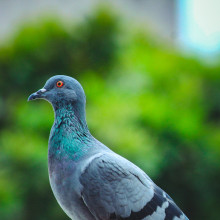
22:22 - Pigeons spot cancer as well as doctors
Pigeons spot cancer as well as doctors
with Professor Richard Levenson, University of California Davis
It turns out that pigeons aren't as bird-brained as you might think! Research published in the journal PLOS One this week shows that a flock of our feathery friends can tell - almost as well as a pathologist - cancerous or malignant tissue from normal tissue! Richard Levenson made the discovery by showing pictures to the birds of what cancerous and healthy breast tissues look like down a microscope on a slide. But why, you may well ask? Chris Smith found out...
Richard - I had been listening to the radio and heard that a colleague at UC Davis had just published a paper on the ability of pigeons to demonstrate remarkable visual memory and, for no particularly good reason, I wondered how pigeons would do in my field of pathology imaging. So I called up the investigator at Davis and he said "wonderful idea but you really need to talk to the University of Iowa researcher who actually had the pigeons, his name is Ed Wasserman " and he turned out to be my co-author on this work.
Chris - And so you were seeing whether a pigeon would be able to do what a pathologist does when you look down the microscope and see a particular combination of colours and contrasts that you would say, with a pathologists eye, that's something that's cancer. Can a pigeon do that?
Richard - Exactly. And the answer to that is it would be counterintuitive if they could do it well, because pathologists are the product of years and years of training. You know, humans don't natively have the ability to walk up to a microscope and make these distinctions between benign and malignant for example. So it would be surprising if pigeons could and, that's the surprising result, the pigeons were very good at this.
Chris - Pigeons don't tend to mix with microscopes well, do they? So how did you show microscope slides to a bird?
Richard - The pigeons were kept at 80 percent of their comfort level with respect to food, and the only way to get their remaining 20 percent was to perform well on the tasks that they were given. And they were given a task by being put into a box with a touch sensitive screen on one end and a pellet dispenser behind them, and an image would be presented on the screen and, after a bit of habituation, they were given the opportunity to peck a yellow or blue bar depending on whether they thought the image was cancer or benign. Of course, they didn't understand those terms but, by being rewarded or not, they eventually learnt to discriminate these two classes.
Chris - And what was the sensitivity and specificity, to take two medical terms, in other words how good were the pigeons at picking up cancer?
Richard - The pigeons were shown a series of benign images and malignant images - equal numbers. I think it was 12 and 12 and, over the course of the first 10 days or so they went from chance to being around 80-85 percent accurate. But the danger here is that instead of learning what cancer and benign breast lesions look like, they had simply memorised the images - just by saying, oh I remember that, that was in class A. So what we did then was, after they hit 80-85 percent, we then gave them another 12 and 12 benign and malignant images they had never seen before and, the wonderful and surprising result was, they did just as well on images they had never seen before.
Chris - And how does that compare with a trained pathologist?
Richard - Not all pathology problems are the same. In other words, there are some very easy distinctions to be made, and these were of the easy sort, so pathologists should have no trouble, and all pathologists, after training, should get all of these correct. But each individual pigeon might be around 80-85 percent accurate. If you turn around and say I'm going to show the same image to four pigeons, and then see what the majority says, their accuracy goes up to around 99 percent. So we call that "flock sourcing."
Chris - Very clever. Now, how do you think that they're doing this?
Richard - Obviously, pigeons were not driven by evolution to become good diagnosticians. What they're doing on this test must, in some sense, rhyme with what they have to do in the wild and vision is one of their major ways of interacting with the world. And, an important thing that they have to accomplish in the world is to avoid being targeted by predators, some of whom use extremely sophisticated camouflage and so, the pigeon has to be able to basically see through the clutter and detect things that might kill them and eat them. And so, I think that the tasks that they have to do in the wild are very similar in terms of content with what you have to do when you look at pathology images.
Chris - Now how do you see this discovery being utilised or translated. Are you seriously contemplating boxes full of pigeons in pathology laboratories to do sort of flock sourcing diagnosis?
Richard - I have to say that the vision of flocks of pigeons making diagnosis certainly has a certain strange appeal to it, but the reality is that this world's complicated interacting forces of training, certification, regulation, financial, and legal parameters would really, I think, prevent this from happening any time soon. Nor is it probably practical at the end because pigeons are very visual, but they have very poor verbal skills and there's a lot more information about images in patients that have to be communicated than just what thing look like.
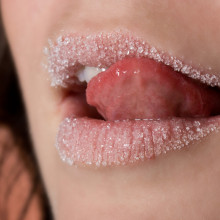
28:17 - Sugar intake should be halved
Sugar intake should be halved
with Professor Ian Young, Queen’s University Belfast, and SACN Group Member
Almost 25% of Brits are obese. Treating obesity and the knock on effects on our 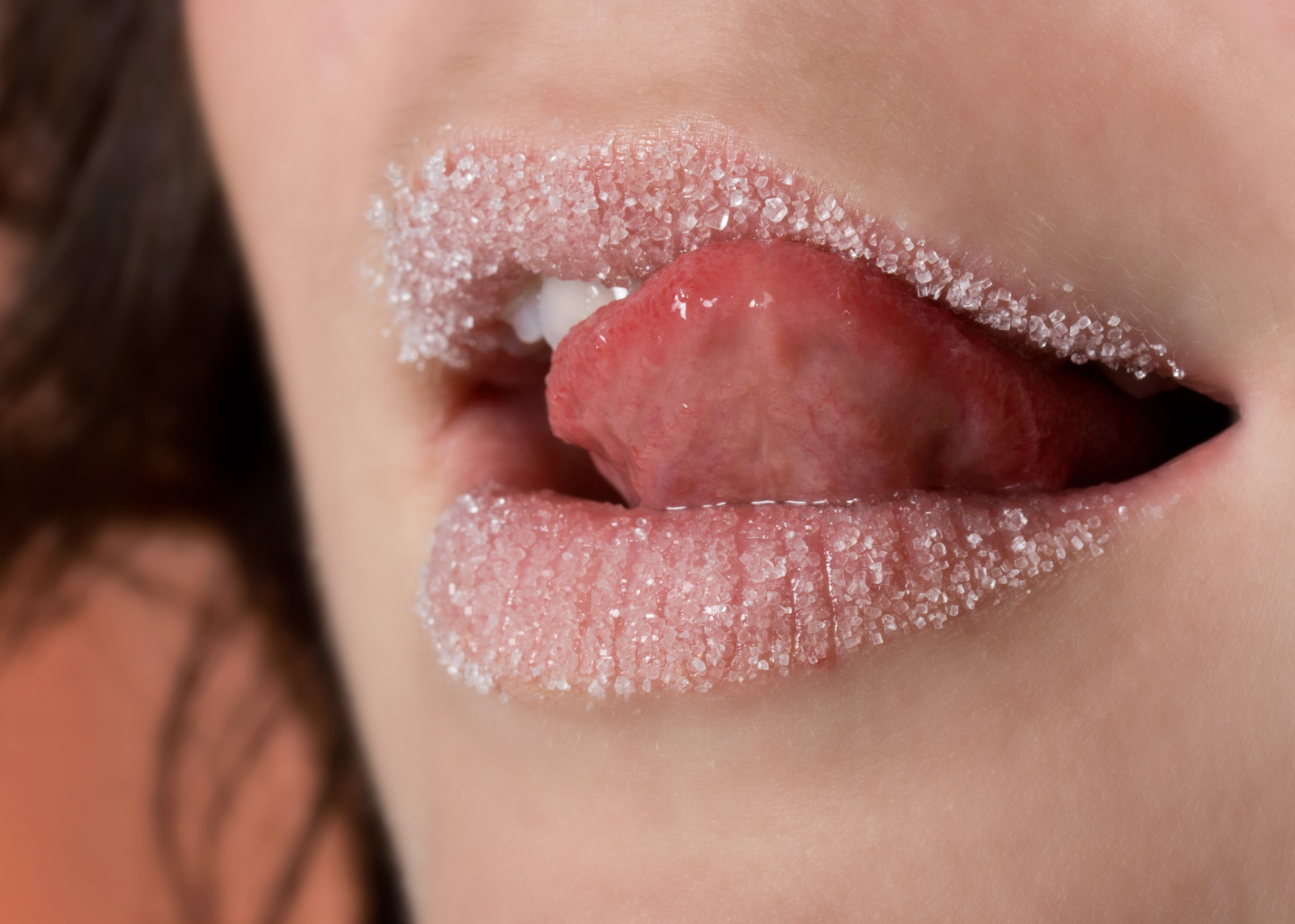 health is costing the NHS £5.1 billion every year. Sugar is thought to be a source of those excess pounds, says a report published earlier this year by the Scientific Advisory Committee on Nutrition. It advises we should be halving our consumption but how we do this is proving controversial. Professor Ian Young, Queen's University, Belfast was one of the authors of that very report and Chris Smith asked him the question that's on everyone's lips: Why do we need to slash our consumption...
health is costing the NHS £5.1 billion every year. Sugar is thought to be a source of those excess pounds, says a report published earlier this year by the Scientific Advisory Committee on Nutrition. It advises we should be halving our consumption but how we do this is proving controversial. Professor Ian Young, Queen's University, Belfast was one of the authors of that very report and Chris Smith asked him the question that's on everyone's lips: Why do we need to slash our consumption...
Ian - Sugars are small molecules, which fall into the group of monosaccharides or disaccharides and, in particular, in the SACN report we have used the term 'free sugars,' which means the sugars which are added to foods or drinks by the manufacturer, plus the sugars which naturally are present in honey, and syrups and unsweetened fruit juices. And we don't count the sugars in the cellular structure of foods, so whole fruits and vegetables.
Chris - Because, for instance, I could argue that a potato is full of carbohydrates, but that's lots of sugar molecules stuck together to make another bigger molecule called starch, which is a very different beast than the glucose, sugar molecules, that make it up, isn't it?
Ian - It is, so the SACN report deals with carbohydrates in total, which include the complex carbohydrates like starch, the sugars as I've described, and also fibre. We didn't find any harmful effects of the amount of carbohydrate which was in the diet. So the recommendation is that it should remain at around 50% but we did find some harmful effects around free sugars...
Chris - When you say 50%, do you mean 50% of the calories that a person takes in should come from some sort of carbohydrate source?
Ian - Yes around 50% of calories should come from carbohydrate source.
Chris - How much are people eating at the moment?
Ian - The amount of carbohydrate is appropriate, it's around between 50 and 60% but, in terms of sugars, it's running between 12% and 15% of energy from free sugars, which we think is far too much.
Chris - And so what are you recommending instead?
Ian - We are recommending that free sugars should be reduced to less than 5% of energy intake.
Chris - And why are you suggesting that?
Ian - Well the harmful effects we found with free sugars were firstly, an increased risk of tooth decay in large prospective studies, secondly, we found that in adults when people eat a diet with a high sugar content that they tend to consume more energy overall, and that's likely to increase the risk of obesity and, for sugar sweetened drinks in particular, increased intakes are associated with increased risk of type 2 diabetes in adults.
Chris - Now about 20 years ago, the proportion of the population of the average western country that was obese was about 10%, it's now about 30%. Can we account for why there's been this dramatic difference in the last 20 years?
Ian - So the dominant theory is that it's due to an imbalance between energy intake and energy utilisation. So people have been eating more calories, and certainly the increase in sugar intake is likely to play a part in that....
Chris - But has that really changed in 20 years? Are people dramatically eating three times different amounts of things now compared with what they did 20 years ago?
Ian - No, they're eating somewhat more but, in addition to that, there's evidence of reduced energy expenditure and it's the balance between the two, the energy intake and the energy utilisation, which probably leads to the increased risk of obesity.
Chris - So why do you think that sugar, and reduction of sugar is the answer then. Because if it's down to lifestyle factors and activity, why will just cutting out some sugar - halving it from 10-15% down to around 5% of calorie intake, why will that make a difference?
Ian - So, I think it will make a difference. I don't think anybody would say that it's the answer. If you eat less free sugars, then you are better able to regulate your energy intake and we believe if sugar intake reduced from 10% of energy to 5%, that on average people would eat 100 calories per day less if you were an adult, and that would certainly make a contribution to reducing the incidence of obesity.
Chris - Ian, is there any evidence that people get 'hooked' on sugar, or is that just a figure of speech?
Ian - Certainly people like sugar but the idea that sugar is addictive in the way that, for instance, some drugs of abuse are addictive, I don't think there's any significant evidence to support that.
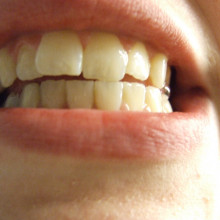
33:36 - Sugar: One big kick in the teeth
Sugar: One big kick in the teeth
with Professor Jimmy Steele, Newcastle University and Newcastle Hospitals NHS Foundation Trust
Sugar is bad for us on many accounts but the two big effects are on our teeth and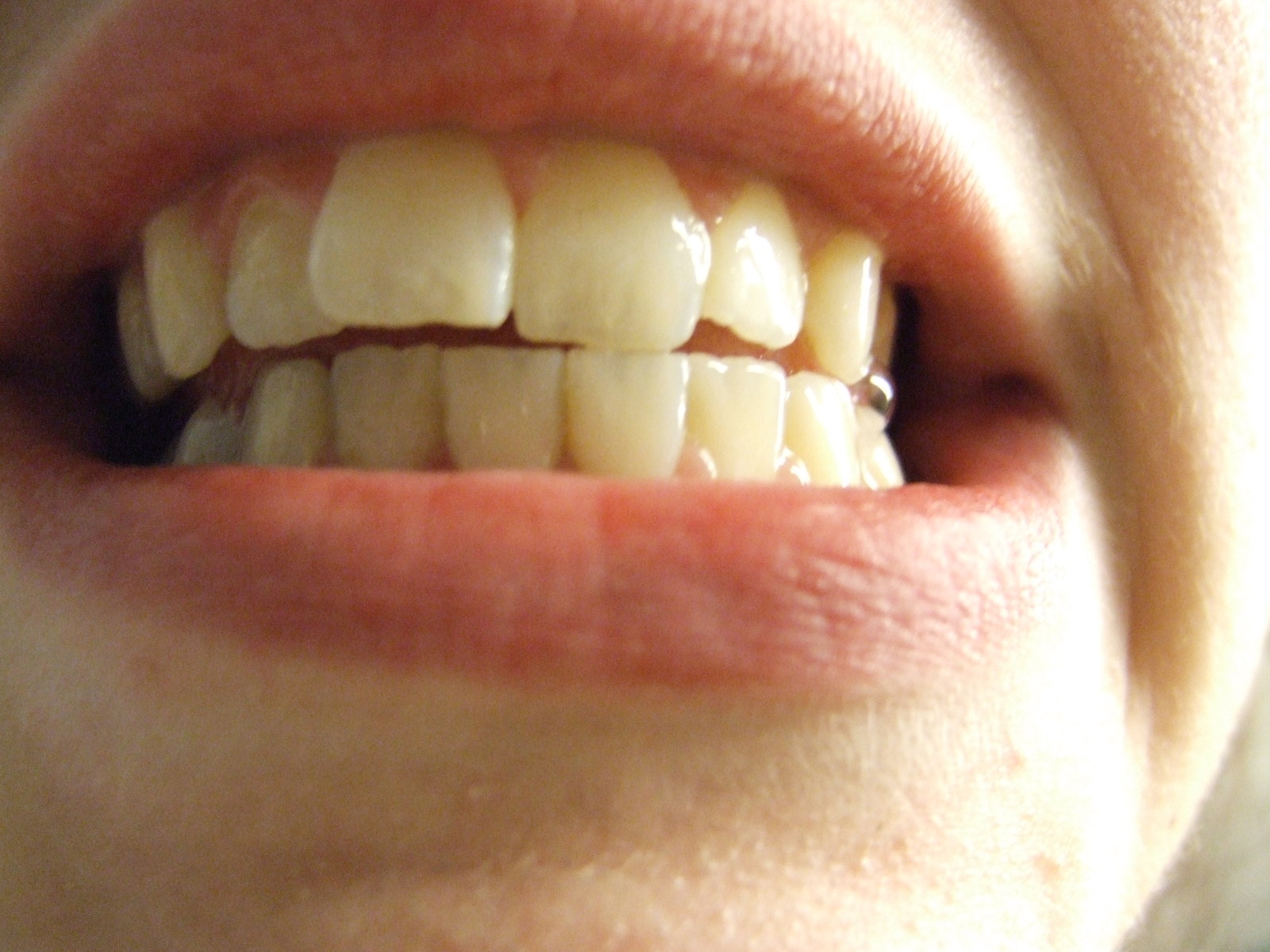 our waistlines. But why does it have this effect? How is the sweet stuff different from the other foods we eat? If we follow that journey of a chocolate bar the first place it ends up is in your mouth, coating your nashers in sugar. Professor Jimmy Steele is a dentist and told Kat Arney what happens to your teeth...
our waistlines. But why does it have this effect? How is the sweet stuff different from the other foods we eat? If we follow that journey of a chocolate bar the first place it ends up is in your mouth, coating your nashers in sugar. Professor Jimmy Steele is a dentist and told Kat Arney what happens to your teeth...
Jimmy - Well when you take that chocolate bar into your mouth and you start chewing it up, and it's delicious, it's not just you that's metabolising that chocolate bar that you're eating. Because your mouth, of course, is full of a multitude of bacteria, different species of bacteria and much of these bacteria are actually in plaque on your teeth. So they form that sort of sticky white material, which is really why you brush your teeth. Your brush your teeth to get that plaque off your teeth but there are parts of your mouth, even if you are brushing really well it's very difficult to get rid of that plaque. For example, where your teeth meet each other you just can't get our toothbrush down there.
And so the plaque - the bacteria in the plaque - will take the sugar and will convert it into an acid, and at the sites where they do that, the ph drops and, when it hits 5.5, then the tissue of your teeth, which is actually very highly mineralised - in fact the enamel of your teeth is entirely mineral tissue - it starts to dissolve, and if that happens often enough, and frequently enough, then it starts to break down and that's what causes a cavity.
Kat - So, is this basically binge eating on sugar or is this continuous eating of sugar? You know, I'm trying to think would it be better for me if I just had an entire bag of toffees in one go or just eat loads and loads of toffees all the time...
Jimmy - Although neither is a particularly good plan the advice I would give to you is if you really have to eat the same amount, you'd actually possibly be slightly better off if you eat it all at once, because this happens over time, so the formation of cavity actually takes really quite a long time, it's not sort of instantaneous. So what happens is, when the sugar goes into your mouth, it goes into the plaque and the ph drops. What then happens is saliva will tend to adjust that and take it back to a neutral ph over a period of time, maybe let's say half an hour or an hour it might come back up to normal. But, if every thirty minutes you pop another toffee into your mouth, or a square of chocolate or whatever it is you fancy, maybe a cup of tea with spoonful sugar in it, if you do that repeatedly then the ph rarely, or never gets above 5.5, and so the period of exposure to this acidity is longer and continuous. Now if have lots of sugar all at once, the ph will really go down, so it's bad to have a lot of it, but it's arguably even worse if you spread it out over time and regularly take your sugar.
Kat - So you've mentioned putting sugar in your tea. My personal vice, things like toffee and chocolate, but there's also sugar in fruits. I did very healthily have an apple before this show. I mean is the sugar in fruit different from the sugar that's in a chocolate bar?
Jimmy - Well, as far as your mouth is concerned, actually it is because as you heard earlier on when Ian was talking, he was talking about free sugars. And the free sugars that are in your chocolate bar when it goes into your mouth are very, very available to the bacteria in the mouth but the sugars that still inside the cells of the apples - now some of that as you chew it might be released - but a lot of that apple will stay as cellular form and you swallow it, and so that's actually much less damaging. That sugar can't escape unless you mush it all out into your mouth, and so as far as your teeth are concerned, it's actually free sugars that are particularly damaging.
Kat - But you mentioned that the microbes in our mouth turn the sugar into acid, but there's also acid in fruits. Is that the same kind of acid, is that also as damaging for our teeth?
Ian - Well it is, but it operates in a different way because a little spot of plaque if you like on your teeth - reduces the ph at that site. The difference with acidic drinks, for example, even very healthy things like orange juice are quite acidic, the difference with them is that they wash over your whole mouth. So one of the classic bits of advice we give as dentists is: if you're going to have a glass of orange juice that's fantastic, it's good for you and all that but for goodness sake don't brush your teeth immediately afterwards because they may be temporarily demineralised. Now they will remineralise very, very quickly, just with the saliva in your mouth. But if you brush your teeth just straight away when they are just a little bit soft then you may take off a little microlayer, and that's what happens.
Kat - So broadly we do hear that we're all eating more sugar, we're eating too much sugar. Has this actually impacted on the nation's teeth.
Jimmy - Well, 50 years ago, we were in dental decay epidemic and that was really going on, I suppose, until the 70s and 80s, and since then we've actually seen a steady reduction in dental decay. Probably one of the biggest things that happened was that fluoride went into toothpaste round about the start of the 1970s. But a lot of other things have happened as well, we look after our mouths better, we have less decayed teeth lying around in our mouths and as they get restored the bugs in our mouth change a little bit. So it's quite a complicated picture, but it has reduced very remarkably and, actually, in fact Britain's now a very good place from the point of view of low levels of decay when we compare ourselves to equivalent nations around the world.
Kat - Is sugar such a baddie. If all our teeth are generally getting better, should we still be concerned and tell kids "don't eat so many sweets" and all that kind of thing?
Jimmy - So what's really happened, actually, is the prevalence, in other words the percentage of the population who are affected has reduced quite remarkably but there's still lots, and lots, and lots of people who are affected. So, about one in three people in adults and something pretty similar in children, have at least one decayed tooth in their mouth at any given time. So that's still quite a high percentage, and if you take the people who have some decay in their mouth, the amount of decay that they have really has not changed, certainly in the last decade if you're in that group. So, although the size of the group's reduced, the amount of decay within the group is just as bad as it ever was and about one in seven children - from the most recent survey, which was very recent actually, published earlier this year - about one in seven children has very bad decay with infections, sepsis or multiple teeth affected. So it's still a pretty severe condition if you've got it.
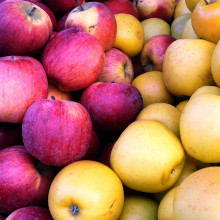
40:20 - When is a calorie NOT a calorie
When is a calorie NOT a calorie
with Dr Giles Yeo, MRC Metabolic Disease Unit, University of Cambridge
Once you swallow a sugary snack, it travels down your esophagus and into your 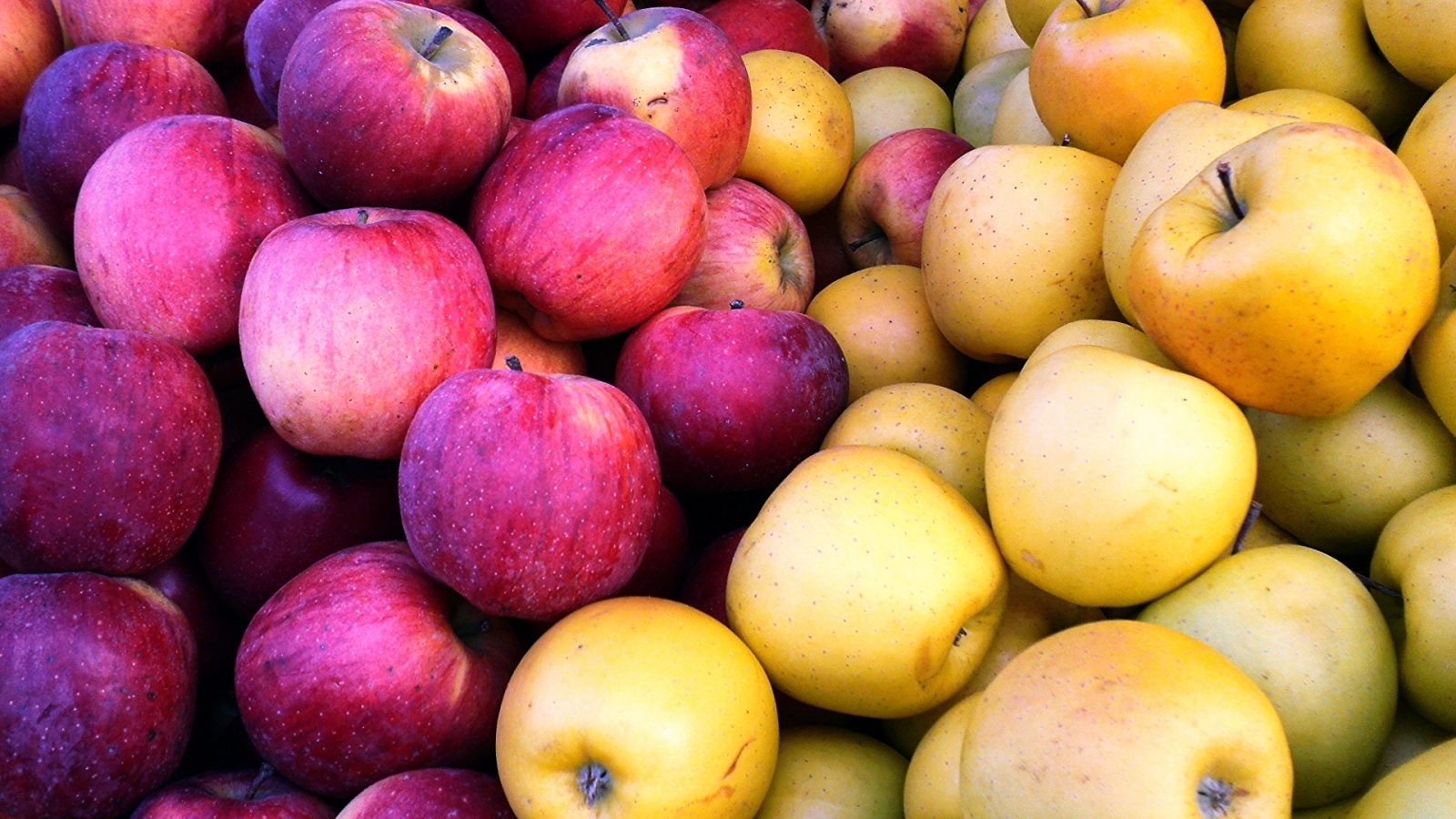 stomach where it's digested but how is it broken down and converted into fat? And is sugar digested differently to other foods? Dr Giles Yeo gave Chris Smith a pit stop tour of our stomach...
stomach where it's digested but how is it broken down and converted into fat? And is sugar digested differently to other foods? Dr Giles Yeo gave Chris Smith a pit stop tour of our stomach...
Giles - So what the stomach does is to begin as you say "kick off the digestion process," so it begins by putting in gastric acids and all kinds of other really quite nasty stuff to begin breaking down the food but, what then happens is the food then passes from the stomach and into the small intestine, and it's within the small intestine that that digestion continues, but where all the absorption of the foods then occur.
Chris - So the food has been dismantled into its chemical components and at that point it then starts to go through the wall of the small intestine, it gets distributed round the body and the blood stream...
Giles - That's absolutely right. So what you don't absorb, is you don't absorb starch, you don't absorb protein like in a big chunk of steak, you don't absorb fat. What you do is you have to break it down, so for example for proteins you'd be breaking it down to amino acids, for fats you'd be getting down to something like lipids and triglycerides, and for sugar you'd be actually be absorbing it as - sugar.
Chris - Right. So how does it compare then. If I eat say 500 calories and I eat them as broccoli or brussel sprouts, some vegetable matter, fruit, whatever compared with 500 calories of sugar, how does that differ,because it's the same number of calories?
Giles - It's the same number of calories if you can actually break it down molecularly. The issue is however, it takes energy to break calories down so, the problem with sugar is 100 calories of sugar, or 500 calories of sugar is 500 calories of sugar. Whereas 500 calories of broccoli or celery maybe even is probably - I don't know the number - but it would be like far less than 500 actual calories and that is the problem, it's energy availability.
Chris - Is there also timing effect in the sense that when I eat something like sugar, digestion can begin and end almost instantly because it's all in a form that can be instantly absorbed. Whereas, if I've got something that's a more complicated sort of food, so there's therefore a longer time as that process is happening. Therefore I'm going to sort of control the rate at which the calories get into me. Does that make a difference as well?
Giles - Absolutely correct.
Chris - Does that mean then that I less hungry because I've got a full stomach and intestine for longer so I'm less tempted by other treats while I'm processing the stuff I've already eaten?
Giles - I think there is evidence for that to actually be the case, yes.
Chris - Now are you very thirsty and hungry, or have you just brought in a whole load of fruit juice and a pile of apples for no reason?
Giles - I am trying to demonstrate one thing because people - I'm not a sugar nazi you know, but I want to demonstrate something about availability. So here I have, I'm thirsty and I have my apple juice, about half a glass of apple juice....
Chris - About half a pint or so.
Giles - About half a pint of apple juice. What I want to demonstrate how many apples it went into making that half a pint of apple juice, so I'm going to pass you the apples over here and we're going to have a race. I'm going to drink the apple juice and I'm going to see how long it takes for you to have these, I don't know, eight apples.
Chris - Eight. Is that really eight apples?
Giles - It is eight apples. It depends on how large the apples are I guess, but yes really eight apples.
Chris - Okay pass the over. Do I have to eat all the apple including the pips, because you know there's cyanide in apple pips...
Giles - Just the non-cyanide pips.
Chris - We did calculate that 54 apples, I think, is potentially lethal dose of cyanide. I've got to eat that lot. Right, I've got to start - 7 apples then...
Giles - Absolutely, I'm going to start drinking now.
Chris - Okay so he's starting drinking his apple juice and I'm going to take my first bite. While you digest your apple juice and I eat my apple, when the calories come into me as sugar, or anything. Sugar's carbohydrate so, why is it people who have a lot of energy actually end up fat?
Giles - Okay so sugar is, glucose anyway, is your base energy units almost, so you need to maintain a level of sugar within your blood - a level of glucose in your blood to not feel faint to not be ill. So, a) you've got to have enough glucose to keep it at that level, b) what happens is that you need a quick release source as storage and that's called glycogen. That tends to be stored in your liver and your muscle, but only, I would say, 100-150 calories of glycogen are in you at any one point. Everything else which is not required at that time, it's broken down and then reassembled as fat.
Chris - Ah, so you tend to preferentially store things as fat. Why is that? Because it's capable of storing a lot more energy than glycogen?
Giles - Absolutely. In fact fat is the professional energy storing unit because it's so dense. It's the densest amount of calories you can fit into a given weight, given gram for example. So that's why you store it as fat.
Chris - Would it be worth then trying to adopt a diet that's completely sugar free?
Giles - That's a very interesting question. I don't know if it technically would be possible because you need fruits and vegetables and they actually have sugars within their cells. Now can you have foods that are completely lacking in additional sugars? Plausibly but then it probably wouldn't be very palatable.
Chris - So the bottom line is that we need to adopt what Ian was suggesting, about 5% of our calories in the form of these extrinsic free sugars. The rest of the carbohydrates up to about 50% of calories in the form of this apple I'm eating, complicated locked away calories and then the rest from fats and proteins in order to receive the right balance of nutrients we need.
Giles - I think that's probably very wise. I mean we need to reduce the amount of food we eat, period, but that's probably wise.
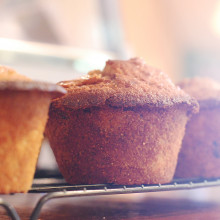
46:24 - The sugar tax: would it even work?
The sugar tax: would it even work?
with Dr Anthony Laverty, Imperial College London
It's clear we need to cut down how much sugar we eat but how do we do it? 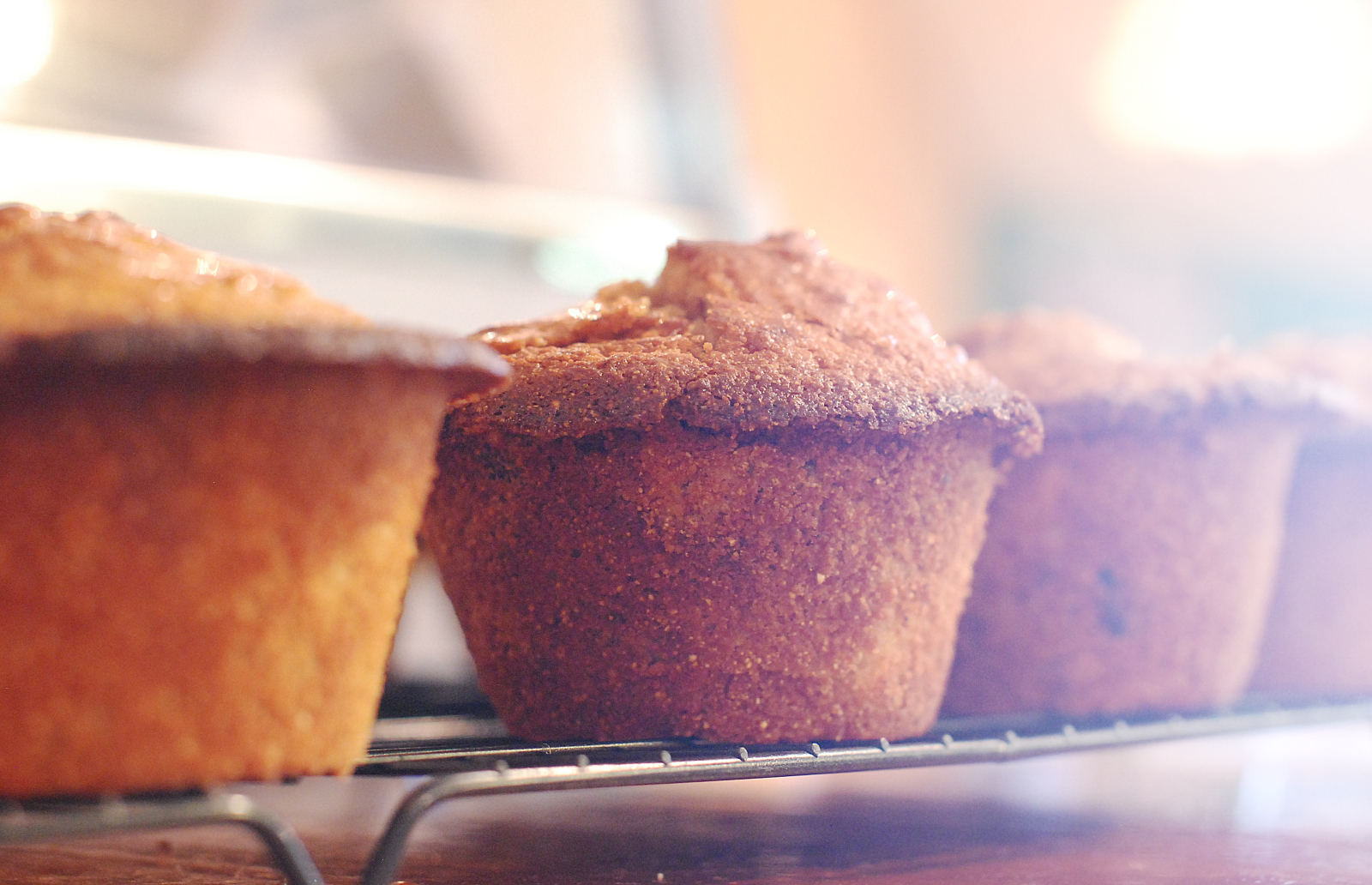 Public Health England say we should tax sugary foodstuffs; David Cameron says we shouldn't... What actual evidence, if any, is there to suggest that this would work? Anthony Laverty is a Research Fellow at Imperial College London and specialises in Public Health. He gave Kat Arney the lowdown on sugar taxation...
Public Health England say we should tax sugary foodstuffs; David Cameron says we shouldn't... What actual evidence, if any, is there to suggest that this would work? Anthony Laverty is a Research Fellow at Imperial College London and specialises in Public Health. He gave Kat Arney the lowdown on sugar taxation...
Anthony - Public Health England (PHE) they haven't sort of specifically gone through the policy details of this is what our tax would look like, this is what we need specifically they've said we could have a 10-20% tax on sugary food. And they say in bold this could include sugary drinks. But they haven't sort of said this is what you need specifically. So we don't really have the detail of the policy on the table as such.
Kat - So it's sort of, have we thought about this sort of thing?
Anthony - Yes, so they sort of say the available evidence says this would work but they haven't said specifically this is kind of how you should design it and this is what we expect to see.
Kat - And this is, obviously, really controversial because the idea of taxing something like sugary drinks and foods has seemed to have got peoples' backs up. What are the key arguments on both sides?
Anthony - The key arguments really about why it would work, it just says you kind of make this simple causal chain that says; things will be more expensive; prices will be passed on to the consumer; people will buy fewer of them; there'll be fewer calories, less sugar and this knock-on, nice impact on their health.
Kat - Everyone's a winner...
Anthony - Everyone's a winner. And so the argument against it are; well we don't really know that the prices will be passed on to consumers; maybe the supermarket will just absorb that. Although the evidence says that that seems unlikely to happen. A lot of it kind of revolves around sort of free market, free choice idea...
Kat - It's an ideological thing isn't it. This shouldn't ...
Anthony - Yes. So people should be able to go out there and buy as much as whatever they like.
Kat - So has this actually been trialed in any countries?
Anthony - So a few places have tried different things. So Mexico, most famously, have this tax on sugary drinks. So Mexico is 1 peso per litre. So you're talking about small amounts. Which is kind of where, again there's some uncertainty. So some people say unless you are going to tax around a 20% level on the sugar in drinks, you're not really going to see a big impact. So Berkeley in California, they have this one cent per ounce of sugar, so they have this kind of tax going on there. So again it's early stages for the implementation of the policy so the evidence there says prices are passed on to consumers but we don't really know very specifically are people buying fewer of them and consuming less calories.
Kat - An there are things that we heavily tax in the UK that could be considered to be unhealthy vices. I'm thing obviously of booze and cigarettes. Does that seem to work? A huge proportion of the price of a packet of cigarettes is now tax.
Anthony - So taxing cigarettes definitely works. I think you'd be hard pressed to find people that disagree with that but the other thing is
certainly on tobacco, taxes are the big one that are effective. Over about 20 years we worked on the affordability of tobacco, we worked on the accessibilities - you can buy it in fewer places, and we worked on the kind of acceptability. There's these public campaigns about how it's particularly bad for you and so similarly with sugar, I would say you would see impacts from the tax. If you want to see some large impacts you're going to have to consider intervening at other places.
Kat - Maybe trying to get rid of that wall of chocolate in service stations? I find that so tempting...
Anthony - Yes. Certain places have said we are going to get rid of that but I would say limited action on that so far.
Kat - Thank you very much. That's Anthony Laverty from Imperial College London. So Chris, how are you getting on with your sugar test? How are you doing with those apples?
Chris - I've managed to complete one apple so far. Giles, how are you getting on with your glass of juice?
Giles - It is finished. It's gone.
Chris - Wow! So Giles has done a whole half pint of apple juice. That's just because it's nice right? Not because you were forcing it down.
Giles - That's right.
Chris - And so I've managed one apple which is precisely one seventh of the calories that Giles has consumed. That's the important point here isn't it Giles, that we've basically taking in a lot fewer calories if I eat the apple than if you neck down a half pint of juice?
Giles - Correct. So sugar in itself is not bad, but how much of it you have - that's the problem.
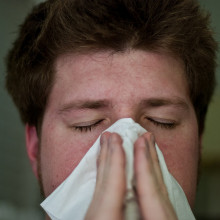
50:55 - How can I stop a runny nose?
How can I stop a runny nose?
Felicity Bedford was keen to nose the answer so she spoke to GP Adam Forman to find out...
Adam - The nose acts as a very sensitive organ to control the temperature of air and the particles in the air being inhaled. So on a cold day, more blood will be sent to the lining of the nose to warm the air up and this produces mucus, hence the runny nose. Likewise for toxic chemicals or even the chemicals in the hot chili, the same process will happen. The lining of the nose will become injected blood and the lining will produce more mucus and a runny nose. Felicity - OK, so there's not much I can do about cold air and toxins but what happens if I have an allergy like hayfever?
Adam - Then the cells in the lining of the nose will produce a histamine reaction, which causes swelling of the lining of the nose, hence the runny nose. This can be controlled, either by avoiding the allergen or any toxic chemicals but also an allergic reaction can be controlled by a local medical treatment, a nose spray, dampening down the histamine reaction or by taking drugs. Also, you may have a runny nose because you've been crying a lot. The tear ducts in the eye run drain into the nose and hopefully this can be cured quickly with a hug or help from a loved one.
By far the most common cause of a runny nose is a virus, otherwise known as the common cold. And this, unfortunately, has no treatment apart from patience and forbearance and a lot of tissues.
Felicity - Thanks Adam. So, Amanda, if nasal sprays and hugs don't work for you, I guess it's time to go tissue shopping. Next week we'll be journeying into the cosmos to answer Jess' question...
Jess - What would happen if I plucked a guitar in space?









Comments
Add a comment